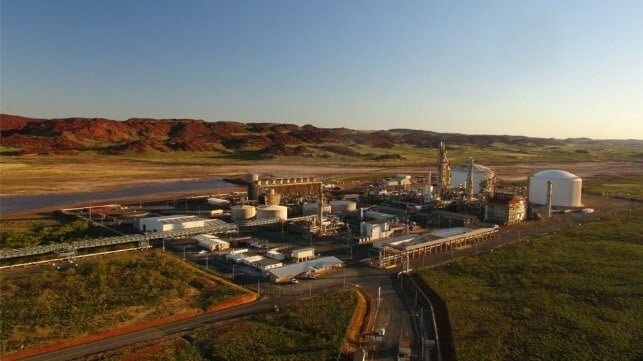Australia’s Pilbara Ports Authority Leading the Way in Maritime Decarbonization
Australia’s Pilbara Ports Authority has taken a significant step towards becoming a global leader in maritime decarbonization with the launch of a clean fuel bunkering roadmap. The region is aiming to establish Australia’s first ammonia fuel bunkering hub in the Pilbara, a crucial area for iron ore mining.
Building on the success of a pilot project conducted by a consortium led by the Global Center for Maritime Decarbonization (GCMD), which involved two ship-to-ship ammonia transfers at anchorages within the Port of Dampier in Pilbara, the roadmap explores the feasibility of creating a clean fuel bunkering hub in the region. The pilot project aimed to simulate ammonia bunkering operations in a port setting, evaluating technical, logistical, safety, and regulatory requirements associated with ammonia transfer within an operational port’s anchorage.
With studies suggesting that lower carbon ammonia fuels could potentially reduce regional shipping emissions by up to 94 percent, Pilbara Ports Authority sees the establishment of a clean fuel bunkering hub as a key strategy to significantly reduce its carbon footprint.
Pilbara Ports Authority’s Strategic Position
The Pilbara region in Western Australia is home to the country’s largest iron ore mines, making it a strategic location for maritime activities. Pilbara Ports Authority operates some of the world’s largest bulk export ports, including Dampier and Port Hedland, serving as critical hubs for global trade.
With over 7,700 vessel visits facilitated by Pilbara Ports in 2023-24, mainly on the Pilbara-China iron ore route, the region is well-placed to become a global ammonia bunkering hub.
Stephen Dawson, Western Australia Ports Minister, highlighted the importance of the Clean Fuel Bunkering Hub Strategy, stating, “By enabling clean fuel bunkering in Pilbara, we are helping global shipping reduce emissions while unlocking new economic opportunities for the state.”
Partnerships Driving Innovation
To advance the clean fuel bunkering project, Pilbara Ports is collaborating with industry partners, with a trial scheduled at the Port of Hedland in 2026. Yara Clean Ammonia, a subsidiary of Norwegian fertilizer manufacturer Yara, is one of the key partners involved. Yara has committed to utilizing its assets in the Pilbara, including the Yara Pilbara Fertilizers plant, to supply ammonia fuel.
Furthermore, the maritime industry’s transition to ammonia fuel is progressing steadily, with the first two-stroke dual-fueled ammonia engine expected to be operational soon. Organizations like the Maersk Mc-Kinney Møller Center for Zero Carbon Shipping (MMMCZCS) are also innovating, unveiling designs for ammonia-powered vessels with advanced safety features.
Leading by Example
Australian mining giant Fortescue is also making strides in decarbonization efforts, having recently signed an agreement with CMB.TECH to charter an ammonia dual-fuel Newcastlemax vessel by the end of next year. Fortescue aims to decarbonize all its Scope 3 emissions, including shipping emissions, by 2040.
With these initiatives and partnerships driving innovation in clean fuel bunkering and decarbonization, Australia’s Pilbara Ports Authority is on track to lead the way in sustainable maritime practices, setting a benchmark for global shipping industry.

